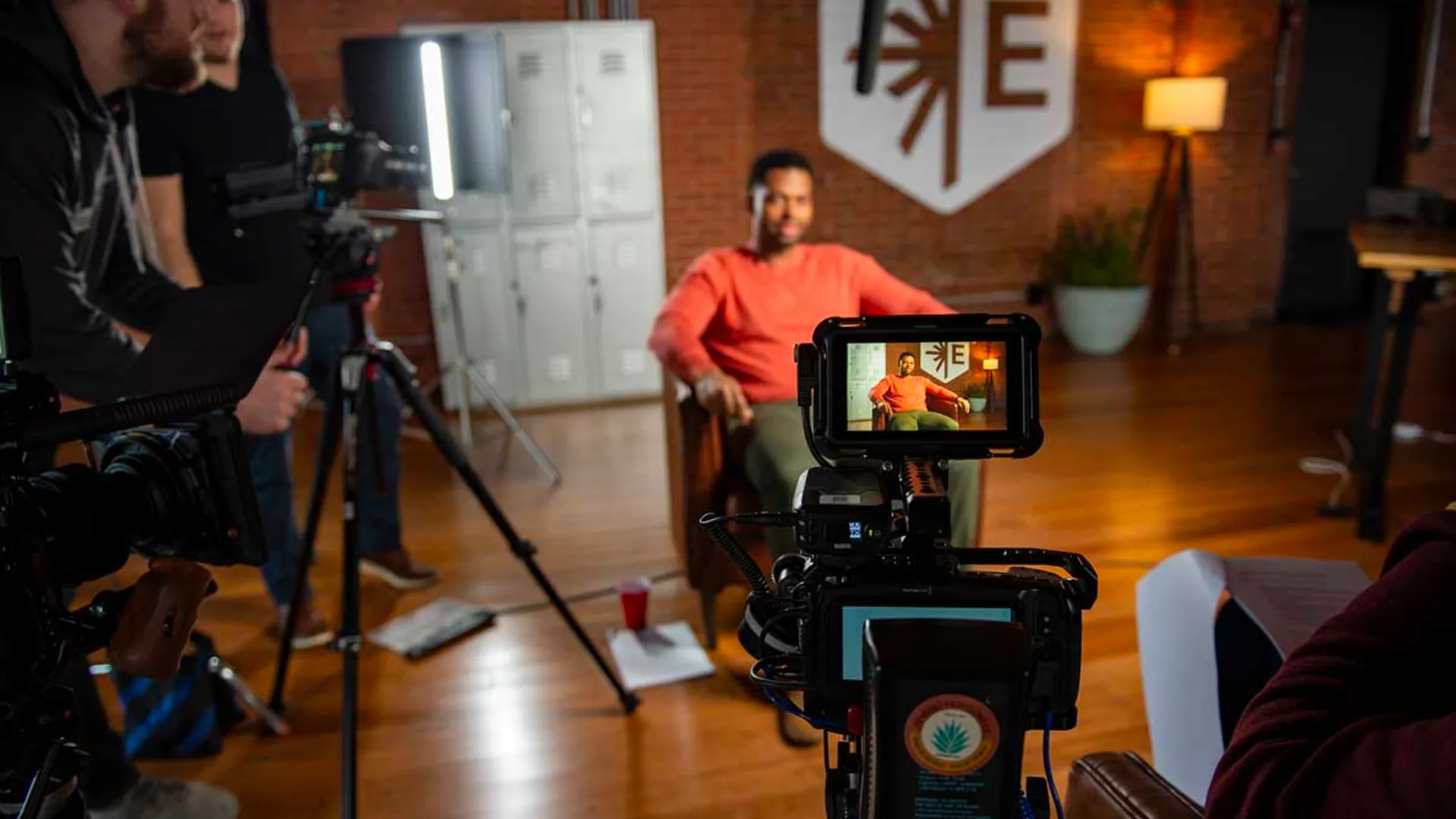
06 May How we manage client expectations
Every video seems to start with an idea, and with that idea comes a lot of other ideas, and with the culmination of ideas comes excitement and then a tentative plan.
These ideas may be yours. You may be a potential client. You may have a business that you help market or you own or manage. You may be a producer or an agency rep. Or you may work in film production like we do. I know we certainly get jazzed up about our own internal video ideas.
But how do you take those ideas and that excitement and then communicate a vision to everyone and get people behind it to then create an action plan? How do we take that initial excitement that our clients have about a video and then get everyone on the same page about what the video will look like and feel like and the potential results it will have?
It’s a tricky thing to communicate artistic language when referring to a video style or tone or mood or feeling or the music, etc. We can’t just jump into trying to formulate specific shot ideas or visuals or styles or sound design or music without first UNDERSTANDING THE GOALS. Every video has a reason it’s being created and if that’s not kept front of mind as the center of the target, then you shoot yourself in the foot before you shoot anything on film. The way we accomplish this is by going through our Video Development Process.
If we’re clear on goals, then we can really dive into the PURPOSE of the video itself. This looks very similar but covers an overall WHY behind a story.
Here’s some example questions that we would cover:
- In as few words as possible define the primary objective of this video
- Who is the primary target audience for this video?
- Why does this story/message matter to this audience?
- What objections might your audience have to this message?
- What are the 3 main takeaways you want for your audience?
- Whether implicit or explicit, what is the simple call to action in this video?
“Every video has a reason it’s being created and if that’s not kept front of mind as the center of the target, then you shoot yourself in the foot before you shoot anything on film.”
If we understand the goals and the purpose of this video, it is then time to talk about the STYLE.
Different video styles and video types such as a scripted commercial or documentary style brand story or an instagram ad all look and feel different because they serve different purposes.A personal touch in a docu-style video helps make a human connection through a real person’s story, an animation helps communicate complex ideas quickly and visually with targeted language, or a scripted commercial allows the audience to have a fast paced and entertaining experience with very precise messaging. When you have the style nailed down, you can then show similar examples that help everyone get on the same page.
At this point it’s always a good time to talk over the timeline as well. The expectations of what is expected for producing a 2min brand story is vastly different than a 30 second commercial with multiple shoot days and actors and crew, hair/makeup, etc. One simply takes longer than the other. All of this is important to understand before creating outlines, writing scripts, scheduling shoots, and especially rolling any cameras. How do you make sure you’re all on the same page with the client or agency partner, or even your own internal team?
Once these steps of understanding the Why, What, and When are covered, we also dive into developing Who the character(s) are, How this story or narrative should be structured, as well as Where the story or video takes place. By then, you can have a pretty clear picture of the project goals, the style and mood and purpose and overall vision. It is then time to create a treatment.
“The expectations of what is expected for producing a 2-minute brand story is vastly different than a 30-second commercial with multiple shoot days and actors and crew, hair/makeup, etc. One simply takes longer than the other.”
Creating a treatment is a great way to visually lay out everything that was covered in the Video Development Process. It will have key words that were brought up during development and a visual language that should align everyone together. Depending on the video style, the treatment document may include a shot list, storyboard, interview outline, basic story structure, a script draft, as well as reference imagery. If at any point the project feels like it’s drifting from the original vision or goals, you always have something to point back to as a map to guide you back to the original purpose of the project.
Sometimes it takes reiterating and standing up for a vision that you’re confident will hit a target goal. This IS a risk sometimes. You cannot always guarantee that a strange idea will make people want to watch, but it certainly goes over better than playing it safe. If you have data that points to an out-of-the-box idea you’ve created that accomplished what it set out to do, include it in the treatment!
“If at any point the project feels like it’s drifting from the original vision or goals, you always have something to point back to as a map to guide you back to the original purpose of the project.”
Managing all of these client expectations, especially to people who sometimes speak what seems like a whole other language is difficult. It’s very obvious to me as a creative and a director what “inspiring someone to action” means or what “up-beat” means to me. This terminology can sometimes get lost however. Examples are always preferred to adjectives. One man’s melancholy is another man’s “beautiful”, and one woman’s “exciting” is another person’s “blah”. We’ve run into issues with music and sound when it comes to the tone of a video, and it’s something we’ve had to question whether we really speak the same language as our clients in certain moments. Sending tracks ahead of time helps, having them send something they like first helps as well. Sometimes we don’t communicate in a way that our clients fully understand. I understand that’s part of the job and it will always be to some degree, but we can get out ahead of it.
Lastly, what do you do when a client says one thing and then seems to change their mind? This is an area where I’m simply and honestly flat out bothered by these days. I hear so often how a client wants to be “edgy” or “different” or (kill me with this one) “disruptive”. What does that all mean? It just means they don’t want to invest in something that isn’t exciting or interesting or will yield a return. The problem is that they don’t really know what they want. It’s our job to do our best to communicate what we think they want through this process so they aren’t left scratching their heads when they see the final result of the video. It’s very unfortunate when a whole team works their ass off on something for weeks and then the CEO looks at it after being unaware of the whole process and then has strong opinions or God forbid wants to scrap or change the whole project. It’s a problem. Getting ahead of this by going through the Development Process and creating Beautiful Video Treatments is how you create a lasting Partnership through getting on the same page. Does this work perfectly all of the time? Nope. Sometimes people are too far off from the beginning and cannot visualize what a project will become until they finally see it. It’s only then that they have real feedback.
All of this can be a painful process, but it’s necessary if we as creatives are going to actually move the needle for our clients and partners to help them actually reach the goals they set. Unfortunately a lot of corporate work does not have clear objectives in regards to marketing, so starting the process out right with our Story Acceleration Workshop really helps get to the bottom of that. It aligns team leaders to think big picture, to look at the organization holistically, and to think about what kind of stories they have already that can be told to move the company forward and to grow.
Our mission is to move people through meaningful stories, and a big part of that is DISCOVERING what those stories are, and then helping communicate that clearly to our partners; to help them see the value, the vision, purpose, and clear expectations. Sometimes those expectations are unpredictable, but that’s the risk you run by wanting to do something different.
If you’re looking to get started on a project, Votary has a passion for telling compelling stories through the art of filmmaking. We specialize in producing brand stories, creative commercials, and documentary series. If that sounds to you like we might be a fit, then let’s talk. Start a Conversation.
